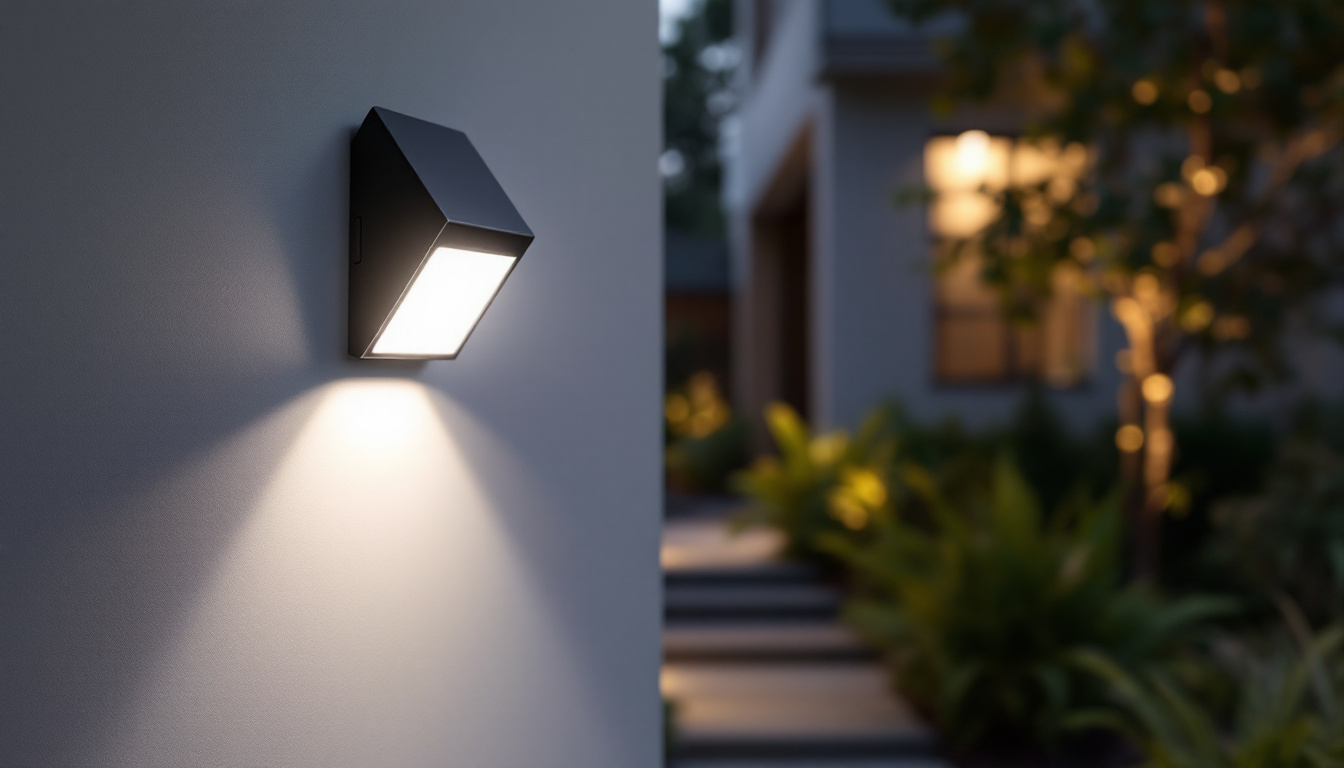
Motion sensor LED lights have revolutionized the way spaces are illuminated, providing both convenience and energy efficiency. These innovative lighting solutions are designed to automatically turn on when they detect movement, making them ideal for various applications, from residential to commercial settings. For lighting contractors, understanding the functionality and benefits of these lights is critical to meeting client needs and enhancing project offerings.
At their core, motion sensor LED lights utilize advanced technology to detect motion within a specified range. This capability not only enhances security but also contributes to energy savings, as lights are only activated when needed. The integration of LED technology further amplifies these benefits, as LEDs consume significantly less power than traditional incandescent or fluorescent bulbs. Additionally, the longevity of LED lights—often lasting up to 25,000 hours or more—means reduced maintenance costs and less frequent replacements, making them a smart investment for both homeowners and businesses alike.
Several features distinguish motion sensor LED lights from standard lighting options. One of the most notable is the sensitivity range, which can vary from a few feet to several dozen feet, depending on the model. This range is crucial for contractors to consider when recommending products to clients, as it determines where and how effectively the lights can be used. Furthermore, many models come equipped with adjustable sensitivity settings, allowing users to fine-tune the detection range according to their specific needs, ensuring optimal performance in various environments.
Another important feature is the adjustable time delay, which allows lights to remain on for a set period after motion is no longer detected. This flexibility can be particularly beneficial in areas such as hallways or staircases, where constant illumination may not be necessary but safety is a priority. Some advanced models even offer smart technology integration, enabling users to control the lights remotely via smartphone apps, providing an added layer of convenience and customization.
Motion sensor LED lights can be utilized in a multitude of settings. In residential applications, they are often installed in entryways, garages, and outdoor spaces to enhance security and provide convenience. For commercial properties, these lights can be strategically placed in parking lots, hallways, and storage areas to improve safety and reduce energy costs. The ability to program these lights to activate during specific hours or in response to particular conditions further enhances their utility in both residential and commercial environments.
In addition to security and energy savings, these lights can also enhance the overall aesthetic of a space. By providing targeted illumination, they can highlight architectural features or landscaping, adding value to the property. Moreover, with the availability of various designs and finishes, homeowners and business owners can select motion sensor LED lights that complement their existing décor, ensuring that functionality does not come at the expense of style. This versatility makes them an attractive option for those looking to modernize their lighting solutions while also embracing energy-efficient technologies.
For lighting contractors, incorporating motion sensor LED lights into their offerings can lead to numerous advantages. Not only do these products align with the growing demand for smart home technology, but they also present opportunities for upselling and enhancing customer satisfaction.
By understanding the benefits of motion sensor LED lights, contractors can position themselves as knowledgeable professionals who can guide clients in making informed decisions. This expertise can build trust and lead to repeat business, as satisfied customers are more likely to recommend services to others.
One of the most compelling reasons to recommend motion sensor LED lights is their energy efficiency. Traditional lighting systems can consume a significant amount of energy, especially in high-traffic areas. In contrast, motion sensor LED lights only operate when needed, leading to substantial reductions in energy consumption and lower utility bills for clients.
Moreover, the long lifespan of LED lights means that clients will spend less on replacements and maintenance over time. This combination of energy savings and longevity makes motion sensor LED lights an attractive investment for both residential and commercial clients.
Security is a top concern for many property owners, and motion sensor LED lights can significantly enhance safety. By illuminating dark areas when motion is detected, these lights deter potential intruders and provide peace of mind for residents and business owners alike.
For contractors, emphasizing the security benefits of these lights can be a strong selling point. Clients are often willing to invest in solutions that enhance their safety and protect their property, making motion sensor LED lights an appealing option.
When it comes to installing motion sensor LED lights, there are several factors that contractors must consider to ensure optimal performance. Proper placement, sensitivity settings, and wiring are all crucial elements that can impact the effectiveness of the lighting solution.
Placement is key to maximizing the benefits of motion sensor LED lights. Contractors should assess the specific needs of each space and determine the best locations for installation. Common areas for motion sensor lights include entryways, driveways, and pathways, where they can provide both safety and convenience.
Additionally, it is essential to consider the detection range of the motion sensors. Installing lights at appropriate heights and angles can enhance their effectiveness, ensuring that they activate when needed without unnecessary false triggers.
Once installed, adjusting the sensitivity and time delay settings is crucial for optimal performance. Contractors should educate clients on how to customize these settings based on their specific needs. For example, a higher sensitivity setting may be appropriate for outdoor lights, while a lower setting may be suitable for indoor applications.
Providing guidance on these adjustments not only enhances the user experience but also demonstrates the contractor’s expertise, further solidifying client trust.
With a plethora of motion sensor LED lights available on the market, selecting the right products can be a daunting task for contractors. Understanding the different types of sensors, styles, and features can help streamline this process and ensure that clients receive the best solutions for their needs.
There are several types of motion sensors commonly used in LED lighting, including passive infrared (PIR), microwave, and dual-tech sensors. Each type has its advantages and ideal applications. For instance, PIR sensors are often favored for indoor use, while microwave sensors can be more effective in outdoor settings due to their longer detection range.
Contractors should familiarize themselves with these sensor types to make informed recommendations based on the specific requirements of each project. Understanding the nuances of each option can significantly enhance the contractor’s credibility and the overall client experience.
Motion sensor LED lights come in various styles and designs, allowing contractors to cater to diverse aesthetic preferences. From sleek, modern fixtures to more traditional designs, there is a wide range of options available to suit any property.
When advising clients, contractors should consider not only functionality but also how the chosen lighting will complement the existing architecture and decor. A well-chosen fixture can enhance the overall appearance of a space while providing the necessary illumination and security.
The lighting industry is continually evolving, with new technologies and trends emerging regularly. Staying informed about these developments is essential for contractors looking to remain competitive and provide cutting-edge solutions to their clients.
One of the most significant trends in motion sensor lighting is the integration with smart home systems. As homeowners increasingly seek connected devices that can be controlled remotely, motion sensor LED lights are becoming a popular choice. This integration allows for enhanced control over lighting settings, schedules, and even energy usage.
Contractors who offer smart lighting solutions can differentiate themselves in the market and appeal to tech-savvy clients. By staying ahead of the curve and understanding how to integrate these systems, contractors can position themselves as leaders in the industry.
Advancements in sensor technology are also shaping the future of motion sensor lighting. Newer models are being developed with improved sensitivity, longer detection ranges, and enhanced features such as adjustable light levels and color temperature settings. These innovations can provide contractors with more options to meet diverse client needs and preferences.
By keeping abreast of these developments, contractors can offer the latest and most effective solutions, ensuring that they remain competitive in an ever-changing market.
Motion sensor LED lights represent a significant advancement in lighting technology, offering numerous benefits for both contractors and clients. By understanding the functionality, applications, and advantages of these products, lighting contractors can enhance their service offerings and meet the growing demand for smart, efficient lighting solutions.
From energy efficiency and security enhancements to installation considerations and product selection, the knowledge gained from this exploration can empower contractors to make informed decisions and provide exceptional service. As the industry continues to evolve, staying informed about trends and advancements will be crucial for success in the competitive lighting market.
Ultimately, embracing motion sensor LED lights not only benefits contractors but also enhances the overall experience for clients, creating safer, more efficient, and aesthetically pleasing spaces.
Ready to elevate your lighting solutions with the advanced technology of motion sensor LED lights? At LumenWholesale, we provide lighting contractors like you with the highest quality, spec-grade lighting products at prices that can’t be beaten. Say goodbye to unnecessary markups and hello to a vast selection of reliable lighting that meets rigorous industry standards. Plus, with free shipping on bulk orders, you can stock up on premium lighting without any hidden costs. Don’t compromise on quality or value—choose LumenWholesale for the perfect fusion of efficiency, affordability, and convenience. Wholesale Lighting at the Best Value is just a click away. Enhance your service offerings and delight your clients with superior lighting options today.

Discover the essential checklist for lighting contractors focusing on receptacle outlets.

Discover the benefits of solar lamp posts in this comprehensive guide.

Discover how LED bathroom lighting not only elevates your space’s aesthetic but also enhances safety.

Discover how Ledball technology is revolutionizing the lighting industry by significantly cutting costs for contractors.